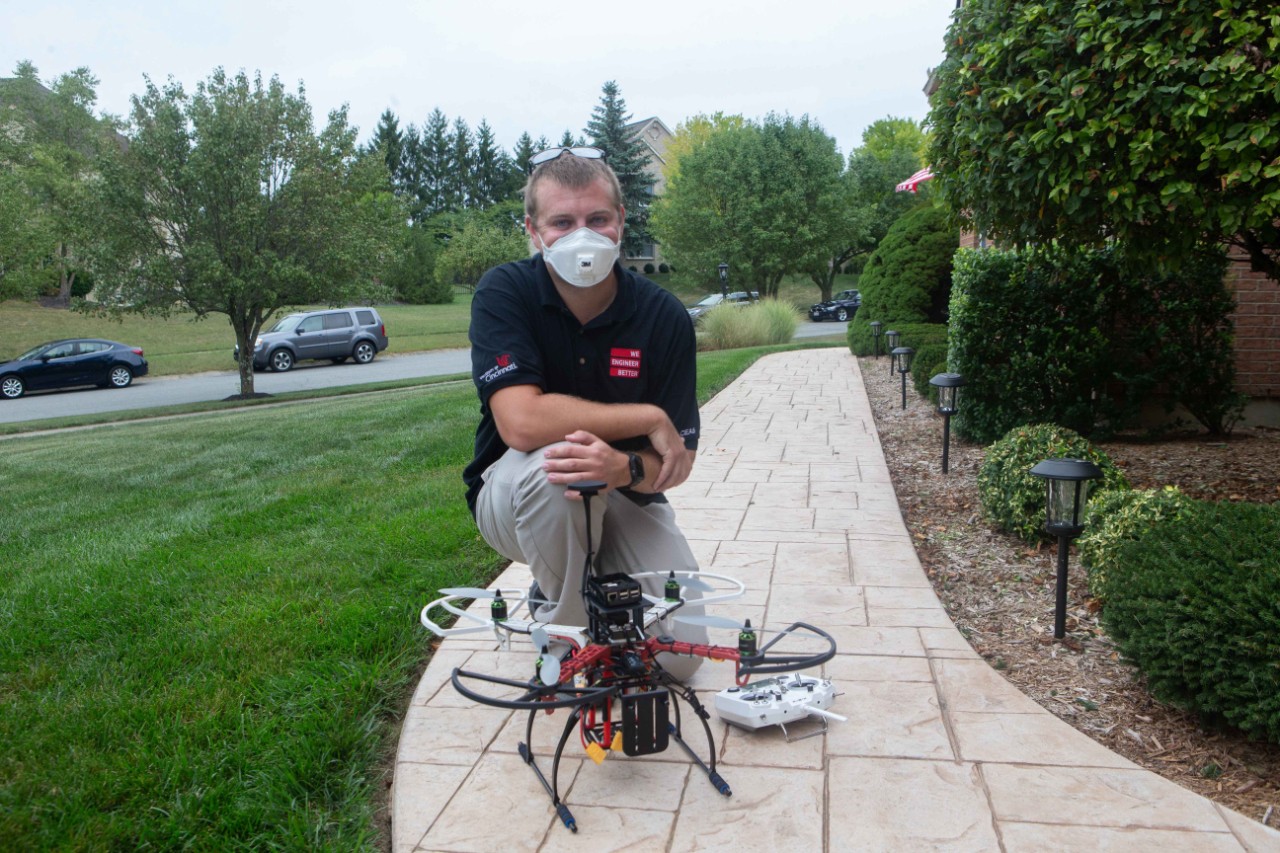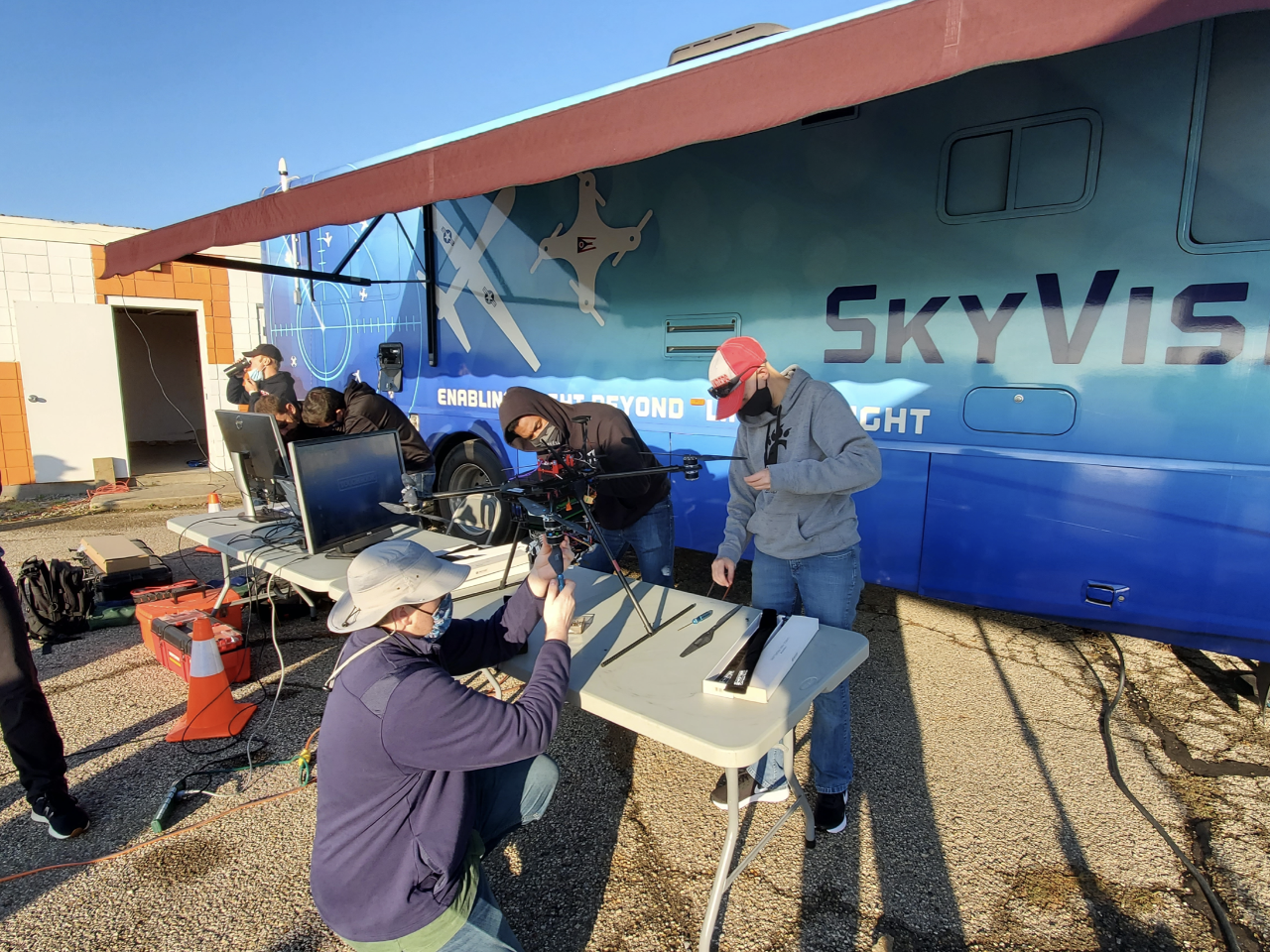The University of Cincinnati is working with NASA to help Ohio prepare for the advent of cargo-carrying drones and passenger-carrying air taxis.
The Ohio Department of Transportation signed an agreement with NASA to incorporate emerging technologies in advanced air mobility into the state's transportation plans through its FlyOhio program. NASA will host a series of workshops over the next year along with local governments, airport authorities, chambers of commerce and vehicle manufacturers.
"The University of Cincinnati's advanced air mobility team is most excited to be a core partner on this program, led by the Ohio UAS Center, aiming to develop technology that will provide safe, efficient and equitable transportation of goods and people throughout the state," said Kelly Cohen, interim department head of the Department of Aerospace Engineering and Engineering Mechanics in UC's College of Engineering and Applied Science.
"Specifically, within the framework of this NASA program, the UC team will assist in the automations supporting flight demonstrations for vertiports and operations to enhance safety of advanced air mobility," Cohen said.
Vertiports are designed and built for aircraft that take off and land vertically.
NASA aims to create safe, sustainable, accessible, and affordable air travel to support emerging aviation markets using revolutionary new aircraft.
"What's the best way for a local government to implement an advanced air mobility system that is equitable, sustainable and integrated with its other transportation systems? Answering that is a big part of what this is all about," said Nancy Mendonca, NASA's deputy advanced air mobility mission integration manager.

UC will work with NASA and the Ohio Department of Transportation to help prepare for the advent of flying cars and cargo-delivering drones in Ohio. Photo/Andrew Higley/UC Creative + Brand
UC will help NASA develop best practices for other government agencies to integrate advanced air mobility into their transportation systems.
"With leadership and stewardship from the state Department of Transportation and a thriving aerospace ecosystem, there is tremendous potential for Ohio to be recognized as a crucible of talent and innovation for the next generation of transportation," said Patrick Limbach, vice president of UC's Office of Research.
The multiyear program lays out an innovative framework to design, test and deploy a statewide advanced air mobility strategy focused on the movement of people and goods. In particular, FlyOhio will test applications in health care delivery, air taxis and regional air cargo transportation.
"In Ohio, we have a longstanding history with advancing aerospace technology, and we continue to pursue new opportunities to support the development of cutting-edge technology," Ohio Gov. Mike DeWine said. "We are eager to join with NASA in a new, broad coalition of institutions across the state who are investing in the advancement of this transformative aerospace technology."
The collaboration coincides with UC's launch of Digital Futures in the Cincinnati Innovation District®, which will offer, among other strengths, computational intelligence expertise and unmanned aerial vehicle research and testing capabilities, said Scott Petersen, executive director cyber development in UC's Digital Futures.
"While Dr. Cohen is at the center of this initial partnership, those Digital Futures connections afford countless paths to multi-disciplinary collaboration with academic and industry partners and other community-based organizations to impact this rapidly developing and complex area," Petersen said.

UC College of Engineering and Applied Science student James "Zach" Wells operates a telehealth drone. Photo/Joseph Fuqua II/UC Creative + Brand
The nation's largest aerospace industry supplier, Ohio has more than 550 aerospace companies and three of the nation's premier aerospace centers. More than 38,000 Ohioans work in the aviation and aerospace industries.
Likewise, UC has deep connections to NASA. Its faculty have improved technology for satellites, space shuttles, space stations and Mars missions. After setting foot on the moon, astronaut Neil Armstrong taught aerospace engineering at UC. UC's Space Research Institute for Discovery and Exploration is continuing that tradition with research that will expand our reach into the universe, its director Charles Doarn said.
"NASA advanced air mobility mission partnership with Ohio is an excellent platform for UC's academic efforts in aerospace engineering and our new Space Research Institute," said Doarn, a UC research professor and director of telemedicine.
Doarn said innovations in aerospace are poised to change the world just as the release of smartphones 15 years ago changed the way we work and live in completely unexpected ways.
"Some people thought telemedicine would never become popular until the pandemic hit and that became the only way you could see your doctor," he said. "The coming disruptions will require us to change. As an academic institution in Ohio, we want to create opportunities for students to build these new career paths."
UC is a presenting sponsor of this week's 2021 Ohio Space Forum, a virtual conference in the wake of the COVID-19 pandemic that will bring together government, industry and academic leaders in the fields of space research, operations, exploration and defense.
"In our lifetimes, advanced air mobility technology will likely have utility on other planets, too," Petersen said. "The safe, affordable, efficient and environmentally friendly means of transporting people and goods will look very different and benefit everyone."
NASA also is working with transportation officials in Massachusetts, Minnesota, Texas and Florida.
UC is contributing to ODOT's DriveOhio initiative, which is focused on advancing smart mobility in Ohio and being a one-stop shop for those looking to develop, test and deploy advanced mobility solutions in the state. Last year, UC agreed to help Crown Consulting and NEXA Capital Partners study the economics of drones in Ohio, particularly along the I-71 corridor between Cincinnati, Columbus and Cleveland.
Featured image at top: UC will work with NASA and the Ohio Department of Transportation's FlyOhio to prepare Ohio for cargo-delivering drones and passenger-carrying air taxis. Photo/Andrew Higley/UC Creative + Brand

UC College of Engineering and Applied Science students work on a drone demonstration for the Ohio Department of Transportation. Photo/Provided






